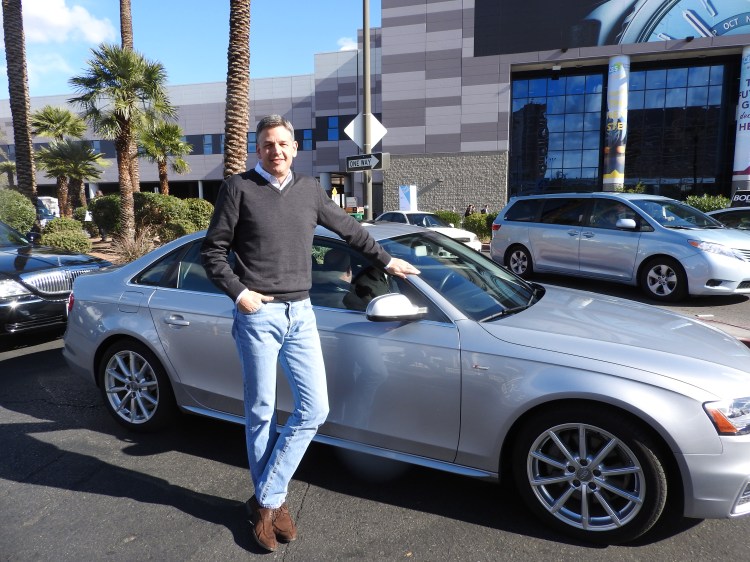VB: Do you count the number of cars you have as one of your growth metrics?
Schneider: Yeah, fleet size is important. Airport car rental is one of those things where you have to get to a certain scale. Nobody says, “These guys are my rental guys when I’m in Dallas.” For us, the first few years have been about building out the footprint so we have enough of a reach. Now it’s a process of slowly but surely adding locations where the customers want to go.
The funding does two things for us. One, it allows us to continue that steady upward trajectory in the business. Two, it allows us to start tying in other kinds of mobility that people have. You use cars and transportation in lots of different ways, the same way you use different clothes for different things. Our whole vision for this, the one that Audi shares with us, is this idea that — Why is personal transportation the last one to that party?
The reality is that 120 years of government propaganda and Madison Avenue and everything else have conspired to make us treat cars differently than we treat other things. But with a new generation of millennials, with new consumer models across categories, the time is now. They’re looking at us as a platform to do that.
VB: Why not do giant limos in Vegas?
Schneider: Have you ever read anything about what that market…Uber should not be afraid of the taxi industry. Uber should be afraid of the limo industry. Those guys are brutal.
But that’s what it’s about. You flip the tables and you become both industry challenger and consumer champion. Consumers will flock to it. We’ve seen that. Now it’s just a matter of getting bigger.
VB: Do you see your scaling task now as similar or different from, say, Lyft and Uber?
Schneider: It’s very different. If you look, the way we see it, you have these three areas of personal transportation. You have the traditional owned economy — new and used cars — which is about a trillion dollars each year. Car rental is about $26 billion. Livery is only about $11 billion, barely one percent of the owned market. But urbanization is driving the growth of rideshare models, and urbanization is happening at a crazy pace. That’s helping, we think, to catalyze this movement to using mobile technology to drive the way people consume transportation into a different realm — more service-based than ownership-based.
For them, they’ve definitely got lots of legal wrangling, lots of logistics and things…
VB: They might be able to spin their drivers and cars up faster.
Schneider: I think they’re going the other way with drivers. I think they’re going to try to get rid of drivers faster. With autonomous driving — 70 percent of their revenue goes to the driver. Travis [Kalanick, Uber CEO] has come out and said it. “I’m trying to get rid of these guys as fast as I can.” They endowed the Carnegie-Mellon robotics institute. All those guys have been moved to autonomous systems. Ford signed a deal with Google to do this.
For them, it’s about primarily autonomous driving and trying to figure out how to more efficiently navigate cities. For us, it’s different. We have use cases where people have to drive. We call it the “rides and drives” economy. Sometimes you want to be on a ride. Sometimes you want to drive. We have some work to do, but in the United States alone, there’s an enormous personal transportation segment.
VB: Do you have a goal for the amount of cities you want to open by the end of this year?
Schneider: We typically don’t come out and say it has to be this or that. But we’ve been on a pace to add about one per quarter, sometimes two. It depends on where it is. If it’s a quick launch, like in Manhattan, we can do it in a much shorter time frame.
You saw another automaker put an investment in more of a technology-driven mobility play — GM putting half a billion dollars into Lyft. With Ford, it’s not an investment, but it’s tying up with Google. This is where, for the last five years, all we’ve really heard about is technology companies, primarily Silicon Valley and West Coast-based companies, trying to get smarter on assets. Apple’s trying to build part of a car or a whole car. Uber is trying to figure out how to build autonomous cars. You have Google’s autonomous car programs.
The significance of this is, it’s a highly regulated industry and very hard to get into, despite what Morgan Stanley says. Now you have asset guys saying, “Wait a minute. We have the hard part of this solved. We have the most knowledge and expertise in how the assets are built. Now we need to figure out how to use technology to distribute our product better.” That’s really gratifying.
VB: Is anybody else directly competing with you?
Schneider: Not really. We compete with three car rental companies that control 97 percent of the airport car rental market. But in the mobility space, well, you can list anybody out there who’s anybody.




